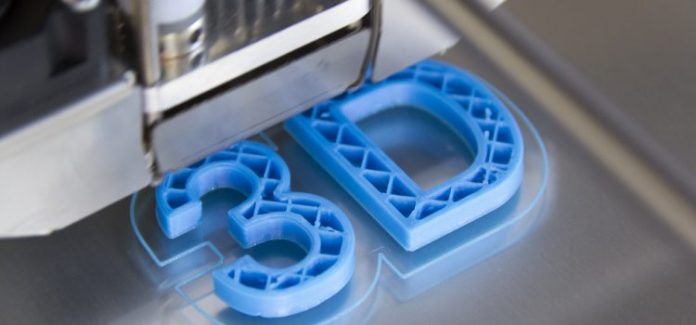Over the last few years, interest in 3-D printing has waned. It was “revolutionary” technology at one point, allowing folks with 3-D printers to produce nearly any object they so desired – ranging from simple things like toys to more complex items like fully-fledged automatic rifles.
And though the guns printed never could fire more than a handful of times, they were still highly controversial.
But laws were passed and eventually, 3-D printing became more of a hobby than a legitimate means of production. A “toy” enjoyed by tech-savvy basement dwellers looking to pad their figurine collections.
Companies have tried to make 3-D printing a feature of their business in the past, but significant breakthroughs always seemed a few years away. Still, plenty of investors believed in the new technology, causing stocks focused on the new printing tech to peak in 2014.
As of this year, they’re down (on average) around 85%. By comparison, the Dow is up 75% over that same period.
Now, however, according to Honeywell International (NYSE: HON), that’s all about to change. The multinational conglomerate says that industrial 3-D printing has saved the company serious cash while procuring billions in new business – two things investors should love.
But that’s not to say that 3-D printing is going to kill off manufacturing’s more tried-and-true methods. Instead, it’s become a major part of a new industry called “additive manufacturing”.
“Additive manufacturing will never replace [high-end] forging,” said Donald Godfrey, engineering fellow at Honeywell Aerospace.
“And if you have a high volume part, you’ll never beat the cost effectiveness of casting.”
However, Godfrey still sees a future in manufacturing where 3-D printing plays a significant role.
“A few years ago we had a part—the casting was wrong—and it was going to take nine months to fix,” he said.
“We didn’t have nine months. I said I could have a part in two months. I was [literally] laughed at.”
And sure enough, Godfrey delivered a new, working part in just one month. Thanks in part to 3-D printing.
It was a transformative moment for Honeywell executives, who realized that production mistakes could be corrected in less time and for fewer dollars than ever before. As a result, additive manufacturing quickly became integrated into Honeywell’s strategy.
But the benefits of additive manufacturing (via 3-D printing) don’t stop at rapid part creation. Honeywell found other use cases soon thereafter, like the ability to produce “one-off” components for legacy products.
“We have to support every engine we have in the field with spare parts,” Godfrey said.
Some of those engines, Honeywell stopped making years ago. And trying to recreate old parts to service them used to be a highly inefficient endeavor.
“You can’t cast [just] one, you cast 1,000.”
Other companies are starting to fall back in love with 3-D printing as well, but for different reasons. General Electric (NYSE: GE), for example, stated in 2017 that they wanted to eventually 3-D print “$1 billion” worth of products, and were in general very bullish on the technology.
However, engineers in the industry believe that using 3-D printers in that manner is still a “pipe dream”, and currently more science fiction than science fact. That doesn’t mean they still aren’t incredibly useful, though, nor are companies discovering new use cases for 3-D printing as time goes on.
The industry’s future lies primarily in additive manufacturing – something Honeywell discovered just recently – and over the next few years, more manufacturers will undoubtedly figure that out as well.
Once they do, the 2014 “peak” in 3-D printing stocks might end up looking like a molehill after investors pile in to the revived technology.
If they do, it won’t come as a surprise to Honeywell engineers. Especially not Godfrey, who saw first hand just how much money 3-D printing had saved the company. Once analysts start to realize it, too, via increasingly efficient corporate earnings, a new wave of manufacturing optimism could sweep the nation.
Even in the face of contracted growth.








